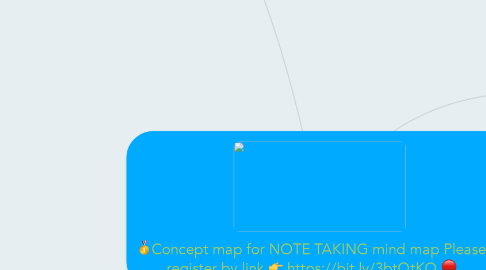
1. Note taking software
1.1. Evernote
1.1.1. can be used on a phone as well for notes whilst not by a computer.
1.2. Microsoft OneNote
1.3. GTDTiddlyWiki
1.3.1. wiki format for organizing schedule, notes, etc.
1.3.2. web based and free
2. Concept Map for Note Taking Mind Map
2.1. 1. About Me
2.2. 1.1. In the about me page, I will describe myself in paragraph form, including my experience with music theory.
2.3. 1.1.1. I will include a photograph of myself for the technology for this page.
2.4. 2. References
2.5. 2.1. In the references page, I will provide my references with proof that everything I use is legal through various copyright/creative commons laws.
2.6. 2.1.1. This page features links to technological references as well as pictures.
2.7. 3. Why Learn Music Theory?
2.8. 3.1. An explanatory information page providing reasons that one should learn music theory.
2.9. 3.1.1. The technology on this page is photographic.
2.10. 4. Key Musical Terms
2.11. 4.1. An explanatory information page providing a list of definitions and examples of key musical terms.
2.12. 4.1.1. This page uses pictures and sound clips or videos as technology as examples for the musical terms listed.
2.13. 5. Lessons
2.14. 5.1. This is the most comprehensive section of the website, containing full-length lessons on various topics within music theory.
2.15. 5.1.1. Each lesson contains videos, photographs, and interactive exercises; some lesson sub-pages may contain additional uses of technology.
2.16. 6. Common Music Theory Misconceptions
2.17. 6.1. An explanatory information page providing a list and dispelling common music theory misconceptions.
2.18. 6.1.1. Some of the misconceptions addressed on this page will include photographs, videos, and/or sound clips as examples.
2.19. 7. Exercises by Topic
2.20. 7.1. This page contains links to the exercises embedded in the full-length lessons, sorted by topic.
2.21. 7.1.1. This page contains technological links to interactive exercises.
2.22. 8. Finding Sheet Music
2.23. 8.1. An explanatory information page providing a list of sources and examples where sheet music can be found.
2.24. 8.1.1. This page contains technological links to outside sources as well as some photographs or digital files of music.
2.25. 9. Musical Genres
2.26. 9.1. This is an explanatory information page providing definitions and examples of the various musical genres.
2.27. 9.1.1. For the technology on this page, I will include pictures and sound clips as examples of each genre.
2.28. 10. Blog
2.29. 10.1. This page displays a blog with posts related to Note by Note content.
2.30. 10.1.1. The blog is a social media component.
2.31. 11. Skills and Preferences Survey
2.32. 11.1. This page surveys guests on their musical skills and preferences.
2.33. 11.1.1. This page contains a survey, which is a technological element, as well as some photographs and references to songs.
2.34. 12. Business Card
2.35. 12.1. This page displays the business card for Note by Note.
2.36. 12.1.1. The business card is displayed as a photo.
2.37. 13. Contact
2.38. 13.1. This page allows people to contact Note by Note.
2.39. 13.1.1. This is an interactive survey form.
2.40. 14. Help
2.41. 14.1. This page shows guests how to navigate this website.
2.42. 14.1.1. This page features a screencast as the technological element.
3. Styles
3.1. Cornell Method
3.1.1. Pros
3.1.1.1. Columns can help with identifying key words and simplifying ideas into your own words
3.1.1.2. notes will appear organized
3.1.1.3. rewriting may force note takers to fully comprehend material
3.1.2. Cons
3.1.2.1. May not work for people who have a hard time listening and writing at the same time.
3.1.2.2. a lot of repetition in some areas
3.2. Mind Mapping
3.2.1. Pros
3.2.1.1. may be useful for visual learners
3.2.1.2. better suited as a review style rather than an actual note taking method.
3.2.2. Cons
3.2.2.1. too involved to do during an actual lecture
3.2.2.2. hard to pre determine map headers before lecture.
3.2.2.3. can be confusing
